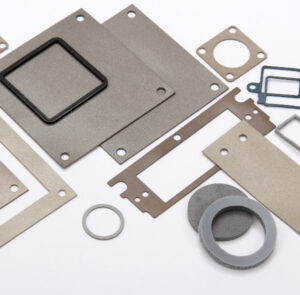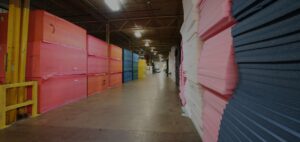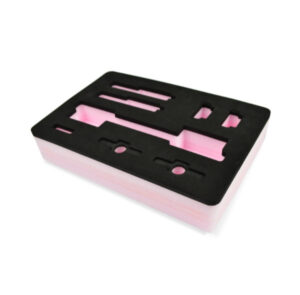
Foam is an extraordinarily diverse and versatile material with hundreds of classifications, each with their own set of properties and uses across a large number of industrial applications. Choosing the proper foam for these applications can be the difference between a successful implementation and a failure. The “right” foam choice depends not only on what your business is trying to accomplish with your foam, but where it will be implemented.
Is insulation important? Does it need to prevent liquids or gasses from passing through it? Does it need to filter liquids or gasses? Will the foam be used for its sound dampening properties? What you are trying to accomplish with your products and their applications will lead to very different foam choices.
These are some of the most common industrial applications and the foams that are generally used for them.
Gaskets
Foams used in gaskets are generally closed cell, which makes them far denser and unlikely to allow liquids and gasses to pass through them. This is especially true for standard neoprene gaskets. However, there are many open cell foams that are used to create gaskets, generally for medical applications. The foams used in these gaskets should meet MVSS302 and UL94 standards, among others. Open cell foams that are used for gaskets can be compressed to block some gasses from escaping, but they are generally not suitable for stopping water.
Foams like neoprene, EPDM, crosslinked polyethylene, and many low compression urethanes are most commonly used for gaskets.
Filtration
Many types of foam are reliable filters because of their open cell design which contain many air pockets between cells, this allows gas and liquids to pass through them will relative ease. They can, however, stop solid particles without impeding the flow of the liquid of gas. Filter foams should meet high-efficiency particulate air (HEPA) performance standards, which ensure that they can perform under the required conditions without failure. In general, the best types of filter foams will be reticulated, which means they have had their cell membranes and impurities removed. This increases the strength of the foam.
Foams like urethane and polyester, among other types of reticulated foam, are most commonly used in filtration.
Sound Control
Sound abatement is vital for many industrial environments because of OSHA requirements that dictate appropriate noise levels for safe working conditions. When choosing a foam for industrial sound abatement, it’s essential to differentiate between sound absorption and sound blocking.
Open cell foams are ideal for absorbing sound waves that can echo and bounce around rooms, but they are generally not ideal for blocking out sounds because of how easily sound waves pass through the air pockets in the foam’s cell structure. For sound blocking, denser closed cell foams perform much better, but they are not generally ideal acoustic control that requires sound absorption.
Different foams will work better depending on the type of sound waves you are trying to control for (high or low range frequencies).








